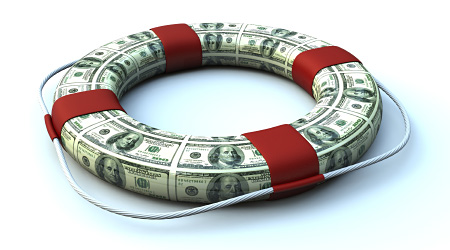6 Tips for Building an Emergency Fund

Emergency funds are crucial for covering unplanned expenses such as auto repairs and health problems. Not enough consumers have a separate savings account dedicated to the sole purpose of providing a safety net when life slaps them in the face. And trust me, at some point life will pimp slap you in the face and it's going to be painful unless you have access to an emergency cash reserve to get you out of trouble. The following are six tips which outline some simple ways of building an emergency cash fund.
1. Let People Know
Communication is an important and necessary steps to saving money for an emergency fund. Not only does it let friends, family and coworkers know that you have a plan and are taking steps to implement it but it will also open the lines of communication. Many other individuals find themselves in similar financial situations and are willing to offer advice or insight if they know you are doing the same. It may also lead to closer ties because instead of going out to lunch at work five days a week it may shift the dynamic to having potlucks or gourmet brown bag days.
2. Monetize A Hobby
The number one suggestion for starting a small business is to turn a hobby into a moneymaking endeavor. For the purposes of building an emergency fund, you don't necessarily need to start a small business but you can absolutely monetize something you do for fun. If you enjoy taking pictures and have nice camera equipment, consider offering photographic services on a word-of-mouth basis. Don't advertise a full-fledged business but shoot a Wedding here or a Quinceanera there to make extra money.
3. Save Your Raise
While not as often an occurrence as it once was, employees do still occasionally receive raises. Most consumers spend what they make and live to the level of their income. If you are in the fortunate position of receiving a raise, take that extra money you receive each month and apply it to an emergency fund. This is a great solution for most individuals because it falls under the logic of if you never had it then you'll never miss it.
4. Everything Must Go!
A consumer driven economy means most consumers own a lot of items they either don't need, don't want or don't use. Instead of letting a basically brand-new bicycle or pair of skis or replacement refrigerator collect dust in the garage or even worse, a storage center, turn it into money for your emergency fund. If you are paying for a storage center, then you have the added benefit of saving $45 per month for additional space to store personal items which never get seen or used.
5. Tax Refund Funding
The best use of a tax refund is to pay off outstanding high-interest rate debt. Paying off 20% credit card debt should be a top priority for most consumers but after that is taking care of consider applying your tax refund to a safety net. Many consumers find it a daunting challenge to save money every month and feel like they are treading water when their emergency fund increases incrementally. By taking $2,000 or $3,000 and storing it in a rainy day fund it immediately puts you in a better position than you were the day before.
6. Set Realistic Goals
Realistic goals are essential to saving money for an emergency fund because unrealistic expectations lead to disappointment. If you tell yourself you will have $5,000 in emergency savings in six months and then don't hit that goal then saving money will become a disincentive. Set a realistic goal of $50 or $100 every month to motivate yourself and provide positive reinforcement. When certain financial milestones are hit treat yourself to something small to show that goal setting really does work.
Elsewhere on StockMonkeys.com







